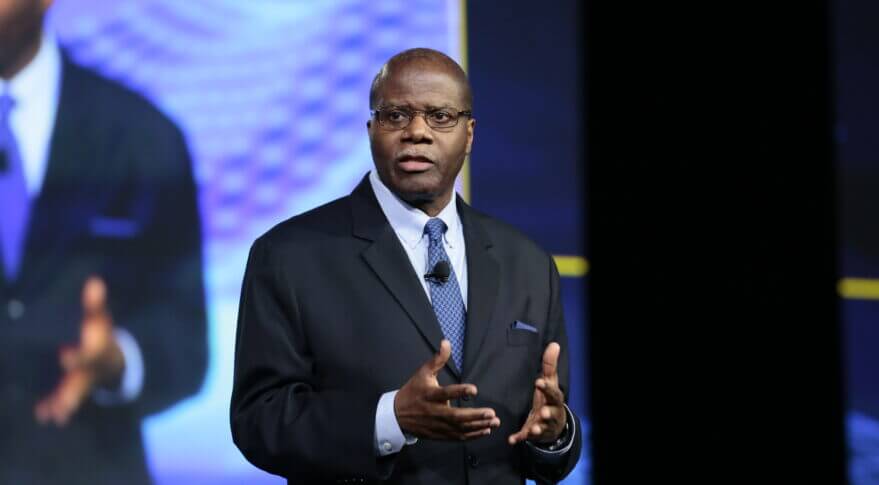
DoD intelligence chief: U.S. made ‘gutsy decision’ to release sensitive imagery to counter Russia’s deception ops (Image Credit: Space News)

DENVER – In the weeks and months before Russia invaded Ukraine, the U.S. government came to the conclusion that it needed to publicly release sensitive intelligence to counter Russia’s “false flag” operations – a deception tactic designed to give them an excuse to intervene in Ukraine.
The decision to release satellite imagery and other intelligence on Russia’s movements “was not taken lightly,” Ronald Moultrie, undersecretary of defense for intelligence and security, said April 26 in a speech at the GEOINT Symposium.
“That decision was made by the commander in chief,” said Moultrie. It was a “gutsy decision to say: ‘We are going to disclose some of the most sensitive intelligence that we have. But it’s important enough for us to do that.’”
“For quite some time, we saw the deployments, we saw their decision signals, we saw their desire to put false flag operations,” Moultrie said.
He said concerted efforts by the U.S. government and commercial Earth observation companies to share information globally “has helped turn the tide.”
Over his entire career, Moultrie said, he had never before “seen a more comprehensive picture as what we’ve had on Ukraine.”
The war so far “has been a case study for us. And it really is one that’s going to really pave the way for the future,” he added. “The Russians are having a tough time in Ukraine, tougher than any of us ever thought that they would. But the Ukrainians are taking the fight to them. And it’s because of the work that you’re doing right now,” Moultrie told the audience of industry and government intelligence professionals.
“We’re facilitating that humanitarian aid, and we’re just letting people know what’s really happening in Ukraine. So this is a case study,” Moultrie insisted.
Partnership with private sector
Moultrie said he would like to see DoD and intelligence agencies build on the partnership they already have established with the commercial geospatial intelligence industry.
“We’re supposed to have this contractual relationship with industry. It’s not the kind of relationship I’d like to have,” said Moultrie. “I like to have a genuine partnership where I can come to you and say: ‘I have a challenge. I have a need. And you can say: ‘I think we can develop a solution and then we can iterate on that.’”
But Moultrie recognized that his views on partnering with the private sector are not shared across the government.
He referenced a conversation he had Monday night with Robert Cardillo, former director of the National Geospatial-Intelligence Agency. Cardillo told him that there are “people in the government that still don’t believe in working with industry,” said Moultrie.
In part he agreed with Cardillo that “there are pockets of the government that still may have the ‘not invented here’ syndrome,” said Moultrie, out of fear that greater reliance on the private sector threatens government programs.
“But that’s not us today,” he said. “We need to be an engaged partner.”
Need for counterintelligence
Moultrie said the U.S. can expect Russia to fight back following the success of U.S. intelligence efforts in support of Ukraine. Counterintelligence efforts will be needed by the U.S. government and by industry “because of the adversary that we’re facing,” he said. “You need to do that too. You’re an integral part of what we do.”
“I guarantee you, our adversaries are monitoring this conference. They’re monitoring everything that we say, they’re monitoring who’s here. They know your companies, they know your supply chains, they’re gonna come after you,” Moultrie said. “So we have to all of us enhance what we’re doing on security and counterintelligence.”
The Russians are a “learning adversary,” he added. “They have watched what the Ukrainians have done, they are actually modifying their game plan. They’re learning from all the things that are being thrown against them.”








